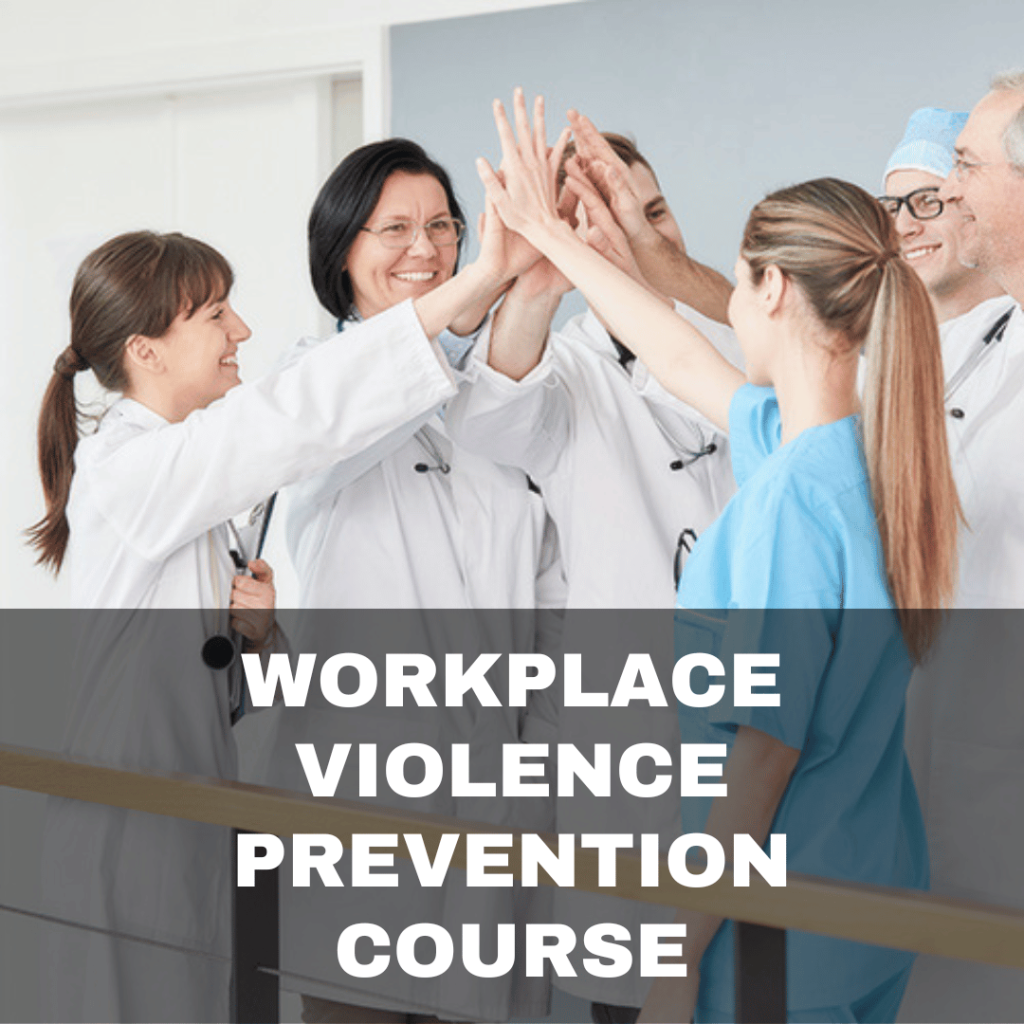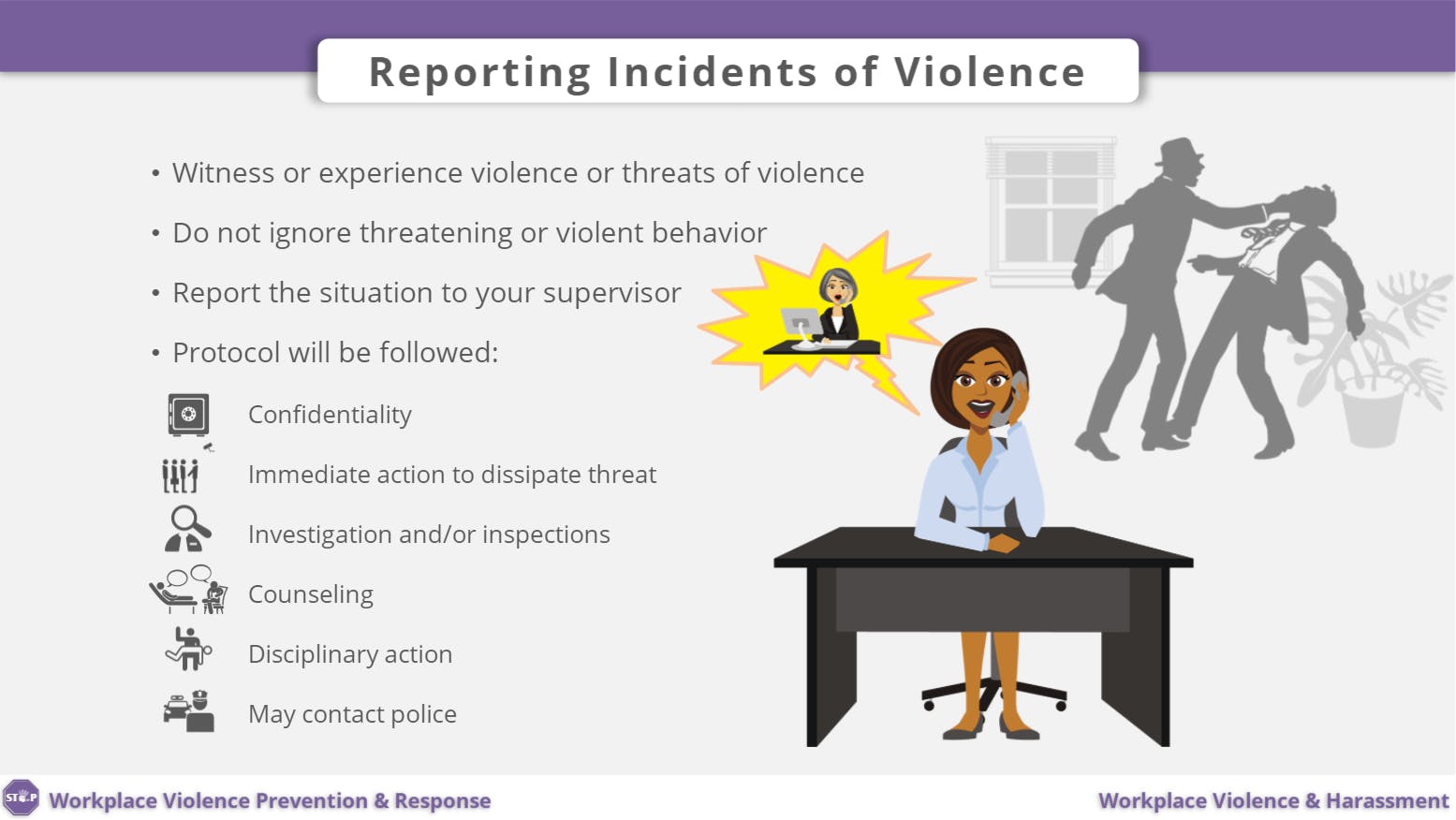Comprehensive Checklist for California Workplace Violence Prevention Conformity
Comprehensive Checklist for California Workplace Violence Prevention Conformity
Blog Article
Analyzing the Impact of Workplace Culture on the Success of Violence Avoidance Initiatives and Staff Member Wellness
The crossway of workplace culture, physical violence prevention efforts, and employee well-being warrants mindful exam, as these elements collectively affect organizational success. A culture that focuses on open interaction and mental security can empower workers to determine and report prospective dangers, therefore fostering an atmosphere for both psychological health and wellness and efficient violence avoidance methods. The subtleties of how these variables connect stay diverse and complicated. Comprehending the details systems at play can expose essential understandings that may inform future initiatives and drive purposeful change within companies. What hidden dynamics could be influencing these outcomes?
Recognizing Work Environment Culture
Regularly, workplace culture serves as the structure for worker interactions and overall organizational behavior. It incorporates the common values, beliefs, and techniques that shape the atmosphere in which workers run.

Organizations need to examine their present office culture to recognize locations for enhancement. This analysis can involve studies, emphasis groups, or one-on-one discussions. By acknowledging the social characteristics at play, organizations can carry out targeted treatments that advertise a safer and a lot more respectful work atmosphere, eventually minimizing the danger of physical violence in the office.
Role of Employee Wellness
A positive work environment culture not just affects business behavior but also significantly effects employee health. When workers really feel valued and appreciated, their overall task satisfaction boosts, leading to boosted psychological and psychological health. This, subsequently, promotes a feeling of belonging and loyalty, which is vital for long-lasting engagement and performance.
Additionally, a supportive social environment promotes open communication, enabling staff members to look for and reveal issues help without worry of preconception. This openness is important in addressing concerns associated with stress and anxiety, burnout, and social disputes, which can detrimentally influence both private wellness and organizational consistency.
Additionally, organizations that focus on worker health usually see reduced absence and turnover rates. Healthy workers are extra resistant and better furnished to handle work environment obstacles, adding to a more effective and stable labor force.
Purchasing staff member wellness through efforts such as health cares, psychological health resources, and adaptable working plans can produce a positive responses loop, improving both specific satisfaction and collective business success (california workplace violence prevention). Eventually, prioritizing employee wellness is not merely a moral imperative; it is a tactical approach that benefits the whole company
Physical Violence Prevention Techniques
Implementing effective violence avoidance techniques is essential for preserving a healthy and secure office setting. Organizations has to adopt an extensive technique that includes policy growth, worker training, and positive interaction. Establishing clear workplace violence policies is the initial step, making sure that all employees understand appropriate habits and the repercussions of offenses.
Educating programs need to be created to educate staff members about identifying caution indications of prospective physical violence, dispute resolution methods, and emergency situation action treatments. Routine drills and simulations can boost readiness, cultivating a culture of understanding and responsibility.
Moreover, cultivating open interaction channels urges employees to report concerns without anxiety of retaliation. This can be helped with via confidential reporting systems or routine responses sessions. In addition, advertising a helpful work environment society that values respect and inclusivity can substantially reduce the risk of physical violence.
Organizations should additionally engage in regular evaluations of their workplace culture and violence prevention approaches, adapting them to advancing needs. By focusing on these strategies, business not only shield their workers but likewise improve total wellness, inevitably adding to a much more efficient work atmosphere.
Gauging Cultural Effect
Determining the impact of workplace culture on violence prevention initiatives is essential for recognizing the performance of current methods and identifying locations for improvement - california workplace violence prevention. To achieve this, companies should employ a multifaceted strategy that combines qualitative and quantitative methods. Surveys and evaluations can collect data on staff member perceptions of workplace assistance, safety, and inclusivity systems, while event records give concrete evidence of violence incidents and their context within the business society
Additionally, emphasis groups and meetings can reveal much deeper understandings into employees' mindsets, ideas, and experiences surrounding physical violence avoidance initiatives. Assessing this qualitative data assists companies to pinpoint social strengths and weak points that may either facilitate or prevent effective avoidance approaches. Additionally, benchmarking against industry requirements enables comparative analysis, helping companies gauge their efficiency relative to peers.

Producing Helpful Settings
Often promoting a helpful atmosphere within the workplace is vital for reliable violence prevention. Such environments encourage employees to click for source connect openly about their experiences and article source concerns, consequently recognizing prospective issues prior to they escalate. A culture of support improves count on among employee, encouraging cooperation and positive problem-solving.
To develop a helpful environment, organizations have to prioritize training programs that concentrate on problem resolution, psychological knowledge, and active listening. These skills equip employees to take care of social connections constructively, minimizing the probability of misconceptions that can cause violence - california workplace violence prevention. In addition, carrying out mentorship programs can offer workers with assistance and peace of mind, adding to their total health
Leadership plays an essential function in forming a supportive work environment society. By modeling understanding habits and showing a dedication to employee welfare, leaders established a tone that encourages others to do the same. Routine comments devices, such as anonymous studies, can also help assess worker view and highlight areas for enhancement.
Inevitably, a helpful setting not just minimizes the danger of physical violence however additionally boosts employee morale, task satisfaction, and efficiency, strengthening the company's commitment to cultivating a flourishing and risk-free workplace.
Conclusion
A positive work environment culture significantly influences both physical violence avoidance initiatives and employee wellness. By cultivating open interaction and motivating the coverage of problems, organizations can improve mental health and wellness and work contentment among staff members. A supportive culture enhances the effectiveness of violence prevention approaches by advertising the prompt acknowledgment and attending to of caution indicators. Ultimately, growing such an atmosphere serves as an important structure for effective interventions and adds to the total success of the company.
The intersection of workplace society, violence avoidance efforts, and worker health warrants mindful evaluation, as these aspects jointly affect organizational success. A society that focuses on open interaction and psychological safety can equip workers to identify and report possible dangers, therefore promoting an atmosphere helpful click here now to both psychological health and wellness and effective physical violence avoidance strategies.A positive office society not only influences business actions but additionally substantially effects staff member wellness. Surveys and analyses can collect information on employee perceptions of office inclusivity, assistance, and safety and security systems, while occurrence reports supply concrete evidence of violence occurrences and their context within the organizational culture.
A positive office society dramatically influences both physical violence prevention efforts and staff member well-being.
Report this page